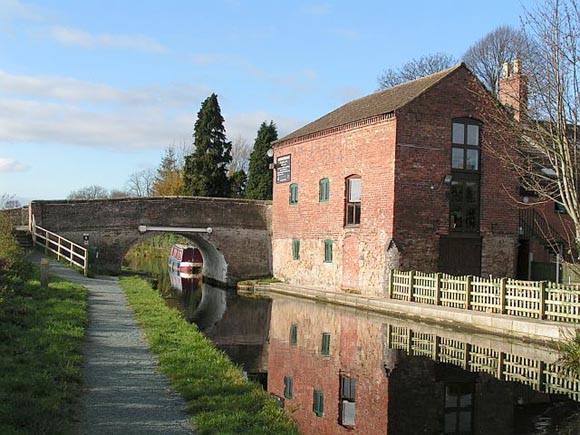The Montgomery Canal (or "Montgomeryshire Canal") is a semi-disused canal in eastern Wales. It is now considered to run 33 miles (53 km) from "Frankton Junction" with the Llangollen Canal in Shropshire, England, to the town of Newtown, via Welshpool. However, the first section of the canal from Frankton Junction is historically the main line of the Ellesmere Canal to the point where what we now call the Weston branch diverges, and then the Llanymynech branch of the Ellesmere Canal: approximately the first 10 miles (16 km) of what is now called the Montgomery Canal was built by the Ellesmere Canal Company. The Montgomeryshire Canal was planned with an end-on junction with the Llanymynech branch of the Ellesmere.
At present only the northern section near Frankton Junction and a central section of the canal around Welshpool are navigable.
History
The canal was authorised in 1793 and by 1797 16 miles (26 km) had been built from Llanymynech to Garthmyl, but stopping 7 miles (11 km) short of Newtown. The canal travelled through a sparsely populated area, and generated only rural traffic which made little profit.
A lack of capital and income greatly delayed construction of the canal. With shareholders fearing they might lose their investment if the canal were completed, a separate company was set up to build the remainder of the canal through to Newtown, the work being completed in 1821: this part was known as the Western Branch of the Montgomeryshire, the original section being known as the Eastern Branch. In total the canal was built over a period of 30 years by three independent companies.
In 1847 the Eastern Branch joined the Shropshire Union network, followed in 1850 by the Western Branch.
Partly due to the late arrival of railways in the area, the Montgomery Canal gradually increased traffic and became profitable. It remained so until after the First World War after which it began making heavy losses. The Shropshire Union company was bought out by the London, Midland and Scottish Railway in 1922 and the canal became increasingly run down.
In 1936 a breach occurred near Frankton Junction and the decision was taken to abandon the canal.
In recent years enthusiasts have been steadily restoring the canal for use by pleasure boaters. In several places the canal has been filled in and roads have been built over the formation, so re-opening the full length of the canal would be an expensive project.
Restoration Update
The Shropshire Union Canal Society have announced that work on Newhouse Lock on the Montgomery Canal was completed on schedule and was opened officially on 25th June 2006 by Lembit Opik, M.P., in conjunction with the Annual Montgomery Dinghy Dawdle. The importance of this opening is that the work will complete the restoration of all of the locks on the section of the canal owned by British Waterways and is the eleventh lock to be restored by the Canal Society.
In 2001, when the work was started, it was estimated that the cost would be �104,000. This was to be funded by an Heritage Lottery Fund Grant of �50,000 with additional amounts from Powys County Council of �20,000 and an IWA Grant �10,000. There was an additional private contribution of �2000 from a Canal Society member. The balance of the cost was to be made up by a cash contribution of �20,000 from the Society to purchase the new gates and volunteer labour from the Society to the value of �12,500.
Soon after work started on the lock, it became evident that there were structural problems which had not been apparent when the first engineering inspection had been carried out. The costs were reappraised and a revised estimate of �250,000 was produced. This left a shortfall of �135,500 on the original estimate of which British Waterways agreed to contribute �65,000. The remainder of the costs have been found by increasing the amount of volunteer labour provided by the Society to far in excess of original expectations of both the Society and British Waterways. | 


